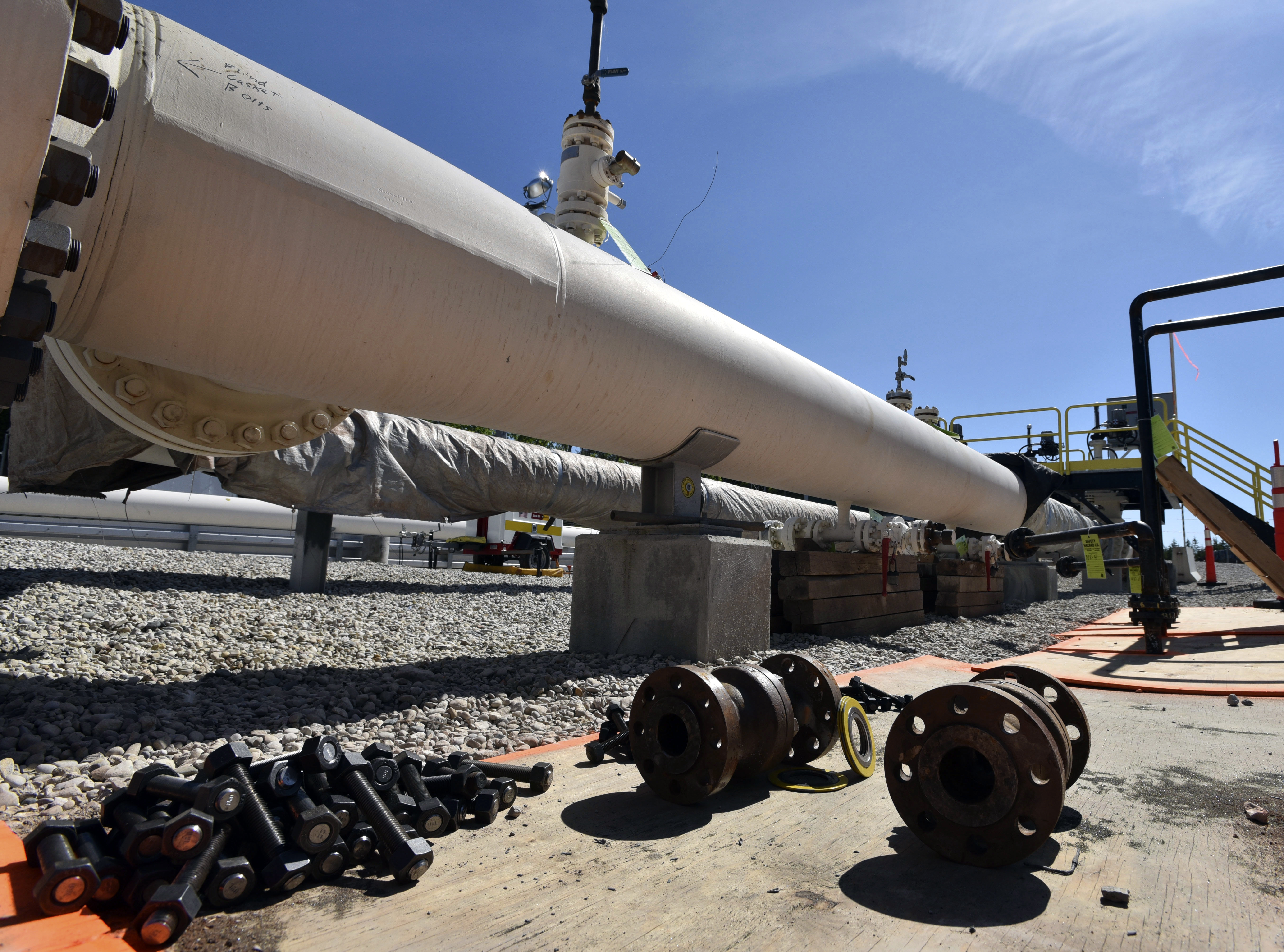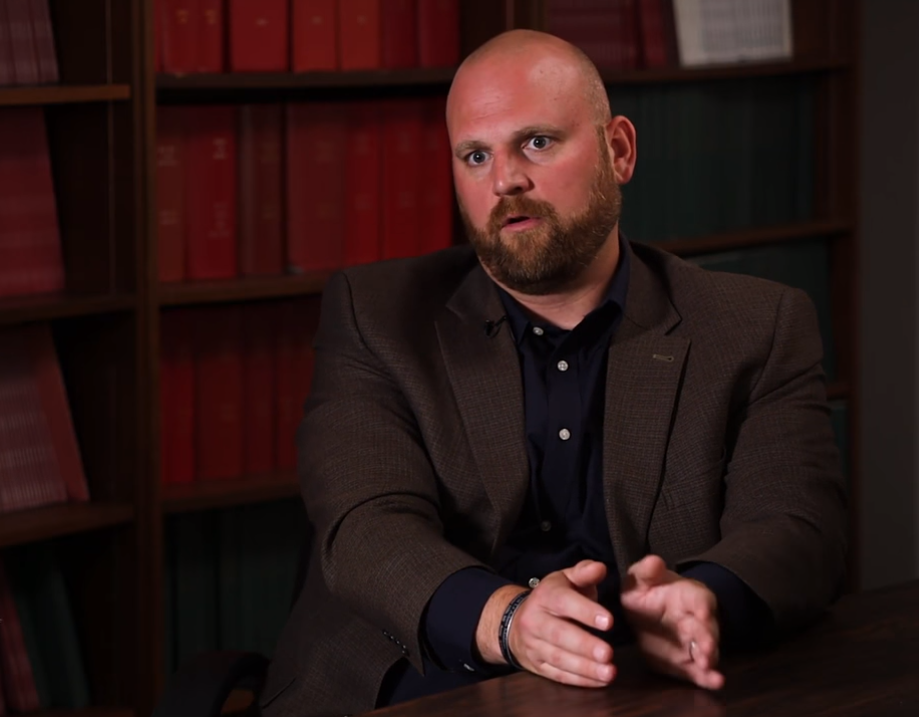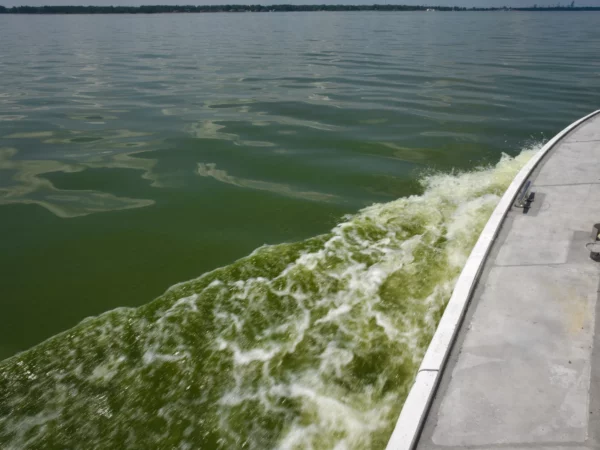
The controversial project to replace the existing 67-year-old Line 5 pipeline in the Straits of Mackinac with a pipeline in a tunnel under the straits remains an issue between Enbridge Energy and the state of Michigan.
A new point of contention in the project is a new permit that would allow Enbridge to withdraw water from the Great Lakes and discharge wastewater.
Enbridge and Michigan’s Department of Environment, Great Lakes, and Energy are continuing the process of application, review and approval of permits necessary for construction to proceed – a process that EGLE previously said was moving along normally.
But separate from that, attorneys from Michigan Attorney General Dana Nessel’s office and Enbridge were in circuit court making oral arguments in the case brought by Nessel, in which she claims that the existing Line 5 pipeline is a public nuisance that threatens the environment and should be shut down.
Pollutants to Lake Michigan
Enbridge’s recent permit application for construction of the tunnel said it would increase “loading of pollutants to the surface waters of the state,” in this case Lake Michigan. The volume would be “continuous” and could be up to 5 million gallons per day.

Enbridge spokesperson Ryan Duffy (Photo by Great Lakes Now)
Enbridge spokesperson Ryan Duffy said the discharge to the lake “would be treated wastewater as part of the project but it won’t be continuous and all wastewater will be treated in accordance with all applicable state standards and guidelines.”
While the discharges won’t be continuous, Duffy said, they will occur “on and off” over the course of a year or more during construction.
EGLE spokesperson Hugh McDiarmid confirmed receipt of the permit application and said it also includes a request to discharge stormwater and groundwater to the lake after construction of the tunnel is completed.
The permit application “is currently under review for an evaluation of the potential pollutants in the proposed discharge,” McDiarmid said.
Enbridge also submitted alternatives to the discharges – known as an antidegradation demonstration – that will be reviewed by EGLE after the application is complete, according to McDiarmid.
Enbridge’s permit application also identifies two separate water withdrawals from Lake Michigan, each slightly short of 2 million gallons per day.
Great Lakes Now asked if the withdrawals would come under provisions of the Great Lakes Compact but McDiarmid said the agency has not received a complete permit application and cannot respond to questions about any proposed large quantity water withdrawals for the proposed tunnel project.
Asked if the withdrawals listed in the permit application come under jurisdiction of the Great Lakes Compact, Enbridge’s Duffy said, “I think EGLE would be best to answer questions on the approvals process.”
Wait and see
University of Detroit Mercy law professor Nick Schroeck said it’s too soon to evaluate what Enbridge wants based solely on a permit application.

Nick Schroeck, Environmental Law Professor, University of Detroit Mercy (Photo by Great Lakes Now)
“Once we see a draft permit produced by EGLE that is available for public comment, we’ll have a better understanding of the potential impacts of Enbridge’s proposal,” Schroeck said.
Any permit granted has to meet water quality standards for discharges and Enbridge bears the burden of demonstrating that it tried to mitigate the discharges, according to Schroeck.
Schroeck said while it is important to focus on the discharge of pollutants to Lake Michigan in the review process, he’s also paying attention to the withdrawals.
“If Enbridge wants to make large quantity withdrawals of Lake Michigan water as mentioned in their permit applications, it would need a separate permit from EGLE for the withdrawal to comply with provisions of the Great Lakes Compact that Michigan is required to follow,” Schroeck said.
The Compact is the eight-state agreement that regulates large-scale withdrawals of water from the Great Lakes basin.
Lack of trust
One anti-pipeline activist group takes issue with the changing nature of Enbridge’s plan.
The pipeline in a tunnel plan has evolved over time, including expansion of the tunnel from 10 feet in diameter to a proposed 18-21 feet in diameter, according to Sean McBrearty, campaign coordinator for the anti-pipeline group Oil and Water Don’t Mix.
“Enbridge (now) seeks to dump up to 5 million gallons of pollutants into the pristine waters of Lake Michigan daily for the duration of their project,” McBrearty said, calling “the entire request unacceptable.”
“Enbridge cannot be trusted and any further permitting requests they make to the state ought to be handled with the highest degree of concern and skepticism,” McBrearty said.
Dueling arguments
Michigan and Enbridge attorneys squared off last week before Circuit Court Judge James Jarno to plead their cases in the lawsuit brought by Attorney General Nessel last June.
When the suit was filed Nessel’s office said in a release that the lawsuit sought a court order to shut down and decommission the existing Line 5 pipeline with reasonable notice and in an orderly manner.
“Enbridge’s continued operation of the Straits Pipelines under the easement granted by the State in 1953 violates the public trust doctrine, is a common law public nuisance, and violates the Michigan Environmental Protection Act because it is likely to cause pollution impairment and destruction of water and other natural resources,” Nessel said.
Assistant Attorney General Robert Reichel called on the judge to issue a summary judgement and order the pipeline to cease operation as soon as practical.
Enbridge’s attorneys characterized the issue as one of policy not the law, and cited Michigan’s 2018 law authorizing the tunnel – passed by the legislature and signed by former Gov. Rick Snyder – as proof of its legality, according to a Bridge Magazine report.
In a separate case, Nessel argued that the agreement between Michigan and Enbridge for construction of the new pipeline was unconstitutional. A judge ruled in favor of Enbridge in that case and Nessel has appealed the ruling.
Enbridge attorneys asked the judge to dismiss the case, saying Michigan didn’t have a legal claim.
“There is no change in the operating condition of the pipeline or change in the law to support the attorney general’s allegations,” Enbridge spokesperson Ryan Duffy told Great Lakes Now.
Duffy said the existing “Line 5 has been safely operating across the Straits for more than 65 years under the easement,” and is in compliance with all federal regulations.
“We also know most Michigan residents recognize the tunnel as the best solution for making a safe pipeline safer and we are committed to build it,” Duffy said.
Nessel spokesperson Courtney Covington declined to comment on the oral arguments.
Judge Jarno did not provide a timeline for a decision.
Catch up with more news on Enbridge on Great Lakes Now:
Army Corps to hear from public on Enbridge pipeline plan
Enbridge seeks permits to build Great Lakes oil tunnel
Enbridge to move forward with tunnel permitting amid pandemic, Interlochen Public Radio reports
Featured image: In this June 8, 2017, file photo, fresh nuts, bolts and fittings are ready to be added to the east leg of the pipeline near St. Ignace as Enbridge prepares to test the east and west sides of the Line 5 pipeline under the Straits of Mackinac in Mackinaw City, Mich. (Dale G Young/Detroit News via AP)/Detroit News via AP)
2 Comments
-
On this……
>>>>>“Enbridge (now) seeks to dump up to 5 million gallons of pollutants into the pristine waters of Lake Michigan daily for the duration of their project,” McBrearty said, calling “the entire request unacceptable.”
Enbridge won’t be discharging “5 million gallons of pollutants” into Lake Michigan. Nearly 100% of the volume of their discharge will be the same volume of water they are seeking to withdraw from Lake Michigan, so there is no issue at all of inter-basin transfers outside of the Great Lakes basin. The overwhelming majority they’ll be withdrawing will be for hydrostatic testing of sections of welded pipe sections — a required safety measure for which there isn’t any alternative.
The only pollutant involved will be suspended solids that are most iron oxide deposits arising from the interior surfaces of the pipe and which are readily controlled.
-
Stop Enbridge now!!! The great lakes are the largest freshwater system on earth!!! WE RELY ON CLEAN WATER FOR SURVIVAL. Simple as that.




